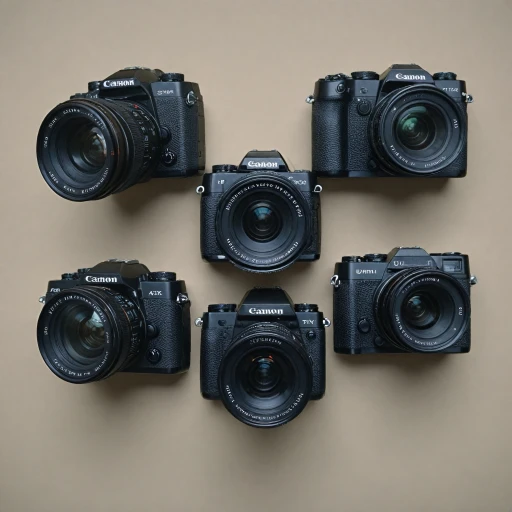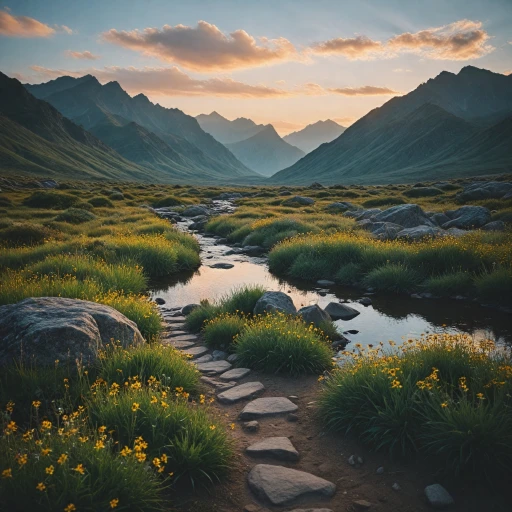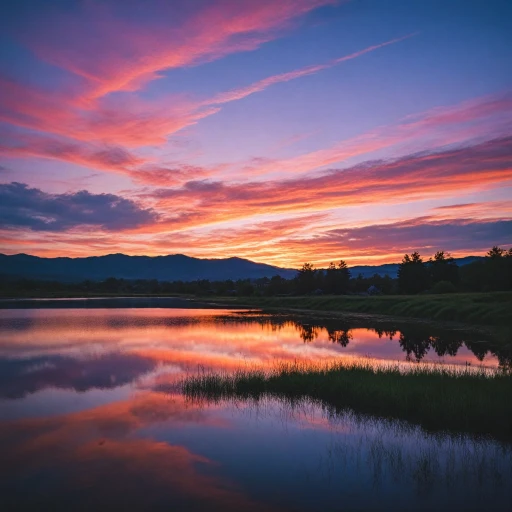Understanding Graduated Neutral Density Filters
Decoding the Core Concept of Graduated Neutral Density Filters
The Graduated Neutral Density (GND) filter plays a pivotal role for photography enthusiasts aiming to perfect their shots, particularly when it involves capturing resplendent sunsets. These filters are ingeniously designed to balance exposure in scenes where the sky is significantly brighter than the foreground, such as a stunning sunset behind a silhouetted skyline. At its essence, the GND filter transitions from opaque to clear, seamlessly merging high light reduction at the top with transparency at the bottom. This smooth transition aids in achieving a balanced exposure across the image.- Optical Glass Material: A quality graduated neutral density filter utilizes high-grade optical glass, ensuring clarity and durability while resisting unwanted colors.
- Stops of Light: Typically, the density filter is specified in 'stops'. The stops light flow, precisely modifying the exposure levels to fit the dynamic range of the scene.
- Multi-Coated and Nano Coating: Modern filters are often multi-coated or feature a nano-coating technology. These coatings enhance light transmission and minimize flare, which is especially beneficial when dealing with the direct sun's intense rays.
The Role of a 77mm Graduated Neutral Density Filter in Sunset Photography
The Impact of a 77mm Filter on Capturing the Sun's Radiance
Utilizing a 77mm graduated neutral density (GND) filter in your sunset photography can be a game-changer. This specific size and type of filter is tailored to meet the demands of many standard camera lenses, offering versatility and precision. The science behind these filters is quite fascinating. GND filters are constructed from high-quality optical glass that gradually transitions from a darker section to a lighter one. This transition allows photographers to balance the exposure between the bright sky and the darker ground. Often referred to as a "soft GND," these filters feature a subtle transition that is effective in most sunset scenarios where the horizon isn't sharply defined. The use of a 77mm GND filter enables photographers to control the stops of light that enter the camera lens. By reducing light in the sky portion of the image, while allowing more light on the ground, the filter ensures a more balanced exposure. This adjustment results in an enhanced image quality, capturing the vibrant colors of the sunset without compromising on detail. GND filters, especially those with a nano-coated multi-coated surface, reduce glare and ghosting effects. This is crucial when capturing the sun's light as it descends beyond the horizon. The addition of multi-coatings on the graduated filter not only improves the optical clarity but also protects the glass from scratches and fingerprints. Incorporating a 77mm graduated neutral density filter into your photography gear isn't merely about controlling light exposure. It's about achieving the desired artistic vision and elevating your sunset photography to new heights. This equipment pairs seamlessly with other components in a filter kit, offering endless creative possibilities. Overall, the proper integration of a soft graduated density filter, such as the K&F Concept's offering, can transform your sunset images, bringing out the richness and depth of colors in ways previously unattainable with a standard camera lens alone.Choosing the Right Filter for Your Camera
Selecting the Ideal Filter for Your Photography Needs
When it comes to selecting the best graduated neutral density (GND) filter for your camera, there are several key factors to consider. A well-chosen filter can significantly enhance image quality by effectively balancing the exposure between the sky and the ground during sunset photography. Here's what you need to keep in mind:
- Size Compatibility: Ensure that the GND filter size matches your camera lens diameter. For instance, a 77mm GND filter is appropriate for camera lenses with a 77mm diameter. This compatibility is crucial for proper attachment and optimal performance.
- Material Quality: Look for filters made from high-quality optical glass. Such filters ensure minimal distortion and maximal clarity. Some filters, like the ones with nano coating, offer additional protection against scratching and reduce light reflection for better image quality.
- Filter Type: Decide between a soft GND filter or a hard one. The soft graduated option provides a more gradual light reduction, ideal for uneven horizons, while the multi-coated hard filters are suited for shooting scenes with defined horizon lines.
- Stop Reduction: Consider how many stops of light reduction suit your needs, as this impacts how much light is filtered. This will help to achieve the correct exposure in varying lighting conditions during sunset captures.
- Versatility: A variable filter could be beneficial if you require flexibility across different photography settings. Brands like K&F Concept offer filter kits that cater to various photographic demands.
Choosing the right lens filter is pivotal, as it directly affects the balance of light and enhances the visual depth of your images. To delve deeper into the nuances of light manipulation in digital photography, explore workshops on light craft techniques.
Understanding the role a 77mm GND filter plays not only informs better purchasing decisions but also enhances your overall photography skills, ultimately bringing your artistic vision to life.
Techniques for Using a Graduated Neutral Density Filter
Mastering the Art of Light and Shadow
Utilizing a graduated neutral density filter effectively can elevate your sunset photography by mastering the delicate balance between light and shadow. The concept is straightforward, but its execution requires a nuanced understanding. Firstly, decide if a soft GND filter or a hard stop filter suits your scene. A soft graduated filter is ideal for scenes where the horizon is not distinctly sharp, gently reducing light across the sky. Conversely, a hard edge filter fits a straight horizon, like an ocean sunset, providing a stark line between light and dark. Position your camera lens to frame the sunset, ensuring your horizon aligns along the graduation line of the filter. This alignment is crucial as it determines how effectively the filter softens the transition between the bright sky and darker ground. The optical glass of GND filters provides clear image quality without a color cast, though attention must be paid to lens filter reflections. For added precision, a filter kit might incorporate a filter soft, multi-coated option that diminishes any potential flare, particularly when shooting towards a direct light source like the sun setting below the horizon. Exposure settings are equally vital. As the GND filter reduces stops light from the exposure equation, you can afford a slower shutter speed, drawing out rich colors in the sky without overexposing. This is particularly beneficial in capturing the nuanced tones of a sunset, lifting your photography to professional standards. While this exposure technique ensures a balanced image, remain adaptable. Light conditions shift quickly during a sunset, so adjusting your density filter strength or angle might be necessary to maintain optimal image quality. Lastly, practice with various GND filters to intuitively recognize the effects each filter strength has on your image. As your skills develop, you'll find yourself more adept at predicting how the glass will interact with your environment, leading to breathtaking captures, every time.Common Challenges and Solutions
Dealing with Uneven Exposures and Balancing Challenges
When it comes to enhancing your sunset photography with a graduated neutral density (GND) filter, even seasoned photographers encounter a few hurdles. These challenges often revolve around managing exposure and ensuring that your images capture the brilliant hues of the sky without compromising the details in the ground. Here's a closer look at some common challenges and practical solutions:- Uneven Light Distributions: The very essence of sunset photography is the stark contrast between the bright sky and darker landscape. A GND filter comes in handy here, reducing the stops of light that hit the lens from the sky. This evens out the exposure, preventing overexposure in the bright areas of your image.
- Choosing the Right Filter Type: Soft GND filters are ideal for areas with no distinct horizon lines, like rolling hills or cityscapes, where the optical glass gently transitions from light to dark. Invest in multi-coated filters or a high-quality filter kit to maintain image quality and minimize reflections.
- Handling Lens Flare: Since sunsets involve shooting directly towards a light source, lens flare can be a pesky issue. Opt for a graduated filter with nano coating, as it will enhance the optical performance by reducing flares and protecting your lens from dust and scratches.
- Placement of the Filter: Improper placement of the graduated section of the filter can lead to unnatural light reduction. Adjust your GND filter carefully over the lens to align with the horizon line, allowing a natural transition of light and ensuring balanced exposure of the sky and ground.
Enhancing Your Photography Skills
Elevating Your Capture Techniques
To truly refine your craft in sunset photography, integrating the use of a graduated neutral density filter into your routine will make a significant difference. It's not just about having the right equipment but also about how you use it.- Embrace Light Reduction: A GND filter allows you to manage the exposure of your images effectively by reducing the stops light reaching your camera lens. This leads to stunning captures where both sky and ground elements are balanced perfectly.
- Play with Exposure: Understanding how different density filters work enables you to maintain the dynamic range of an image. With optical glass filters, like those featuring nano coating, you're set to capture clearer, more vivid images.
- Experiment with Angles: Adjusting the angle of your soft GND can significantly alter the exposure effect on your scenes. This practice is particularly useful when photographing sunsets where light conditions change rapidly, requiring quick adaptability with your lens filter.
- Utilize Multi Coated Options: Filters with multi coated layers enhance image quality further by reducing reflections and avoiding pesky glare. These are essential when capturing scenes with contrasting elements of bright sky and darker grounds.
Overcoming Typical Hurdles
Beyond just technical skills, overcoming challenges is about problem-solving and adapting to circumstances. For instance, soft graduated filters are particularly beneficial for smoothing transitions between bright and shadowed areas.- Combat Lens Flare: Use lens hoods or adapt your shooting angle to prevent unwanted spots that can degrade image quality.
- Balance Color and Tone: Neutral density filters are ideal for ensuring that your camera captures hues faithfully. This way, your sunset shots reveal a seamless blend from sky to ground.



